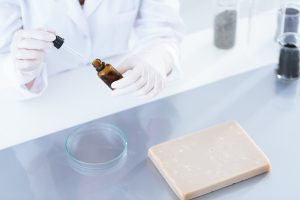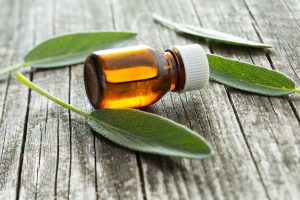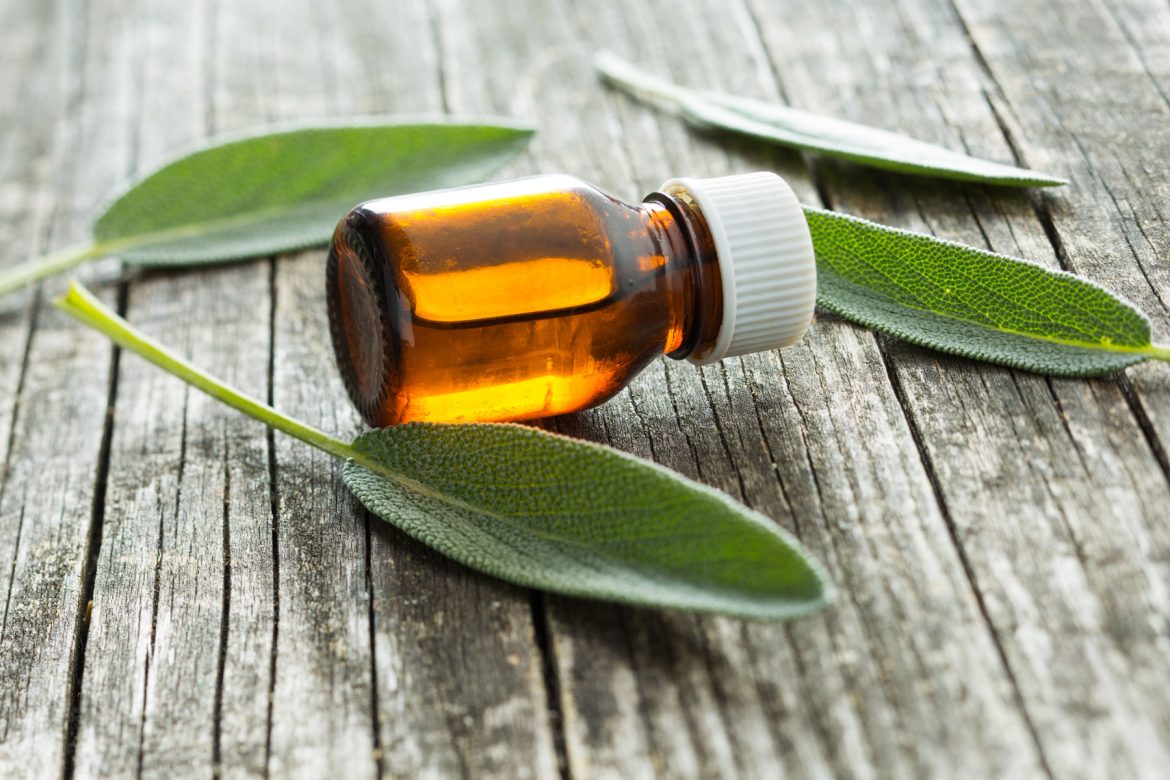What causes essential oils to go bad?
 All essential oils have a shelf life to them, even 100% pure essential oils.
All essential oils have a shelf life to them, even 100% pure essential oils.
The main factor that contributes to their shelf life is oxidation.
Oxygen and atmospheric moisture are the main contributing factors to the oxidation of essential oils.
Pure essential oils have a less likelihood of going rancid or harboring bacteria growth. However essential oils in a water-based product such as sprays, lotions and creams, will eventually have a higher chance to support bacteria growth due to the presence of water.
How to tell if my essential oils have gone bad?
Here are 4 ways and tell tale signs to identify essential oils that have been kept past its useable date, and are not ideal for normal usage.
 Your essential oils should appear clear and consistent and not cloudy, or have a change in color.
Your essential oils should appear clear and consistent and not cloudy, or have a change in color.- Your essential oils have a different smell to them. Because of the chemical changes, the aroma of your essential oils also change. You can compare the scent it with a new bottle of the same essential oil if you are unsure. If your essential oils smell rancid, they have likely reached quite an extreme state at this point.
- When opening the essential oil bottle cap, there is sticky residue under the cap or around the threads of the bottle. This is definitely a tell tale sign that your essential oils has been oxidized.
- Skin reactions, such as redness, rash, itching, irritation, burning sensation and inflammation when applied onto the skin under normal use.
These are signs that your essential oils have gone bad, and you should stop using them and dispose of them right away. If you are experiencing serious adverse reactions, you should seek medical advice form a doctor immediately.
What happens when essential oils go bad?
 Essential oils will start to lose its therapeutic properties as it further oxidizes. Oxidation causes an undesirable change in the chemical composition of the oil.
Essential oils will start to lose its therapeutic properties as it further oxidizes. Oxidation causes an undesirable change in the chemical composition of the oil.
At a certain stage, using bad essential oils can be dangerous because it can cause skin irritation and other adverse reactions.
It is imperative that you practice proper usage and storage of your essential oils to maximize its therapeutic effects during your time of use.
How do I store essential oils to keep them fresh as long as possible?
Here are 7 tips for your everyday usage and storage of essential oils:
- Do not leave the bottle cap off for an extended period of time. If you have a habit of not capping back your oil bottless immediately, or leaving them half capped, you should make it a point to keep to this routine.
- Do not store your essential oils in hot or humid environments such as your bathroom, kitchen cabinets or outdoor areas. Heat and humidity drastically increases the oxidation rate of your essential oils. You should avoid storing at such conditions at all costs.
- Avoid light exposure to your oils. Apart from keeping your oils away from heat and humidity, you should also store them away from any light. Leaving them near windows with direct sunlight is a surefire way of speeding up the oxidation process. You should store your blends in amber or cobalt glass bottles, as they help to minimize the light rays from hitting the essential oils.
- Do not store your essential oils in plastic bottles or containers. Essential oils will degrade the plastic.
- For long term storage of your essential oils, minimize the air space inside the bottle. Plan your essential oil usage and try to keep your oil bottles filled up to the top if you don’t intend to use them for a while. This help to minimize the oxygen contact inside the bottles, and helps minimize the oxidation process.
- Another tip for long term storage is to keep your unused bottles of essential oils in the refrigerator. Your fridge is a dry and cool environment that is conducive for keeping essential oils fresh. Put them in a ziplock bag and label them to prevent accidental misuse.
- Lastly, the best preventive measure is to only buy what you need. Buying in larger quantities can help you with bulk savings, and that is how I usually go about with my purchases. But buying way more than you need does not justify the savings you get because at the end of the day, your essential oils have a shelf life, and you don’t want to end up tossing your precious oil away because they have gone bad.
What is the shelf life of essential oils?
 Not all essential oils have the same shelf life. Different essential oils have varying periods of shelf life depending on several factors such as the volatility of the oil, the type of oil, the composition of the oil, the distillation process and more.
Not all essential oils have the same shelf life. Different essential oils have varying periods of shelf life depending on several factors such as the volatility of the oil, the type of oil, the composition of the oil, the distillation process and more.
Most citruses and conifers contains monoterpenes, which are very prone to oxidation, and they have one of the shortest shelf life of all types of essential oils. They typically have a shelf life of about 1-3 years. These essential oils are:
Angelica root, bergamot, black pepper, cypress, fir (balsam), fir (siberian), frankincense, grapefruit, hemlock, juniper berry, kunzea, lemon, lime, nutmeg, opopanax, orange (sweet), palo santo, pine (scotch), pine (white), rhododendron, rock rose, spruce (black) and spruce (white).
These essential oils have lots of oxide compounds and are sensitive to air, oxygen and heat. They typically have a shelf life of about 2-5 years:
Cardamom, eucalyptus (globulus), eucalyptus (radiata), laurel leaf, lavender (spike), ravintsara, rosalina, rosemary and sugandha kokila.
Essential oils with phenol compounds have a shelf life of up to 3 years, and include:
Cinnamon, clove bud, oregano, thyme thymol and tulsi (holy basil).
Essential oils with ketone, monoterpenols or esters have a shelf life of about 4-5 years, and include:
Basil (sweet), clary sage, geranium (rose), ho wood, lavender (bulgaria), lavender(spike), majoram (sweet), neroli, nutmeg, palmarosa, peppermint, petitgrain (bigarade), rock rose, rosalina, rose absolute, rosemary, spearmint, tea tree, thyme (linalol) and xanthoxylum.
Essential oils with sesquiterpenes and sesquiterpenols have excellent shelf life of around 6 – 8 years, and include:
Balsam copaiba, black pepper, carrot seed, cedarwood, chamomile (german), chamomile (nepal), ginger, ginger (fresh), helichrysum (italicum), manuka, melissa, myrrh, opopanax, patchouli, rhododendron, sandalwood, spikenard, vetiver and ylang ylang.
What happens when essential oil goes bad?
 Essential oils tend to lose its therapeutic effects when it oxidizes. Certain oils when oxidized to a certain extent could cause skin irritation and other adverse reactions. Oils that contain monoterpenes, aldehydes, phenols, oxides and furanocoumarins are more prone to this. E.g. most citruses, pine (scotch), cypress, melissa, lemongrass, lemon eucalyptus, citronella, basil, thyme, eugenol, tea tree, bay laurel, chamomile (german), angelica root and more.
Essential oils tend to lose its therapeutic effects when it oxidizes. Certain oils when oxidized to a certain extent could cause skin irritation and other adverse reactions. Oils that contain monoterpenes, aldehydes, phenols, oxides and furanocoumarins are more prone to this. E.g. most citruses, pine (scotch), cypress, melissa, lemongrass, lemon eucalyptus, citronella, basil, thyme, eugenol, tea tree, bay laurel, chamomile (german), angelica root and more.
If an oil causes a skin reaction such as redness, itch, swelling or any other adverse reactions, you should dispose them immediately.
Some oils that are past their shelf life may still be able to be used for alternative purposes, despite having lesser therapeutic effects.
What can I do with old essential oils?
 Here are 7 alternative uses for old essential oils.
Here are 7 alternative uses for old essential oils.
- Pest repellant – mix vinegar, water and citronella and spray on surfaces
- Freshen sinks and drains – 1-2 drops of your favorite oil into sinks and drains
- Freshen bins – 1-2 drops of your favorite oil at the base of the bin
- Kitchen cleaner – 3-4 drops of lemon essential oil to few ounces of water to clean counter tops
- Bathroom freshener – Add onto cotton balls and tuck away behind sinks or toilet bowls
- Bathtub scrub – 5 drops of bergamot with 1/2 cup vinegar and 1/2 cup baking soda
- Vacuum freshener – 1-2 drops into dust bag

